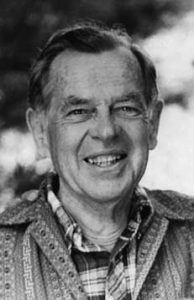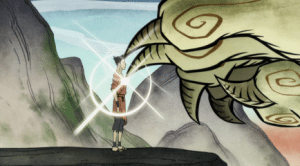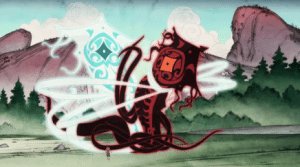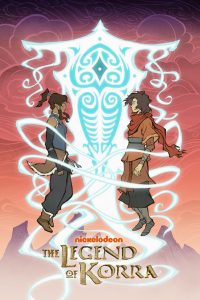From an early age, I was fascinated with Greek mythology. I absolutely loved the way the stories explained things: the origins of the world, the creation of man, the rising and setting of the sun, etc. And some of the stories were just epic, you know? Like pretty much everything Hercules ever did.
Today I still have a healthy appreciation of myth, and while I’ve tread most of the ancient stuff before, occasionally a “modern” myth will surface and I can fall in love all over again.
And sure enough, there I was, watching The Legend of Korra (which is just an absolutely amazing show, as was its predecessor) on Amazon Prime, when S2E7-8, “Beginnings Part 1 and 2,” dropped what might now stand as my favorite examples of mythology ever…and this from a children’s cartoon show!
The Monomyth![Joseph Campbell monomyth hero's journey]()
The late mythologist Joseph Campbell penned what is alternatively referred to as “The Hero’s Journey” or “The Monomyth.” Both terms are singular and broad because Campbell believed it sufficiently plotted just about every quote-unquote hero’s narrative. He even applied it to religious figures such as Buddha, Moses, and Jesus.
A hero’s narrative fitting neatly into Campbell’s monomyth is not a bad thing at all. The arc is riddled with compelling, intriguing, and dramatic elements; all of which serve to develop the figure into the hero we know him or her to be now.
In “Beginnings Part 1,” we’re introduced to Wan, a food-pilfering street urchin who we know going in will become the first Avatar.
Here is Wan’s Hero’s Journey.
The First Avatar and The Hero’s Journey
The Call to Adventure
Our first impression of Wan – the guy we know is going to become the Avatar; a paragon of good and balance – is him stealing bread and getting trounced by the family from which he took it. Upon returning to his treehouse, he complains about his station in life and a companion responds, “Some people have power, and some people don’t. And you don’t.”
And this gives Wan an idea.
Wan volunteers to venture out from the city (which we learn rests upon the back of what is called a lion turtle) as a member of a hunting party. The wild beyond the city’s walls are crawling with spirits which are perceived as hostile, so the lion turtle grants each member of the hunting party the ability to bend (or generate and control, if you’re unfamiliar with the show’s terminology) fire with the expectation that upon returning to the city they give the power back.
Crossing the Threshold
Wan feigns being a coward shortly after the hunting party departs and is told to return the fire to the lion turtle. He chooses to keep it instead! It lands him into a heap of trouble though, and he is banished from the city – a particularly damning sentence as Wan believes that there is just this single city and nothing but wilderness and spirits otherwise. He begs the lion turtle to allow him to keep the fire bending so he has a means of protection. It is granted to him and he sets out into the great unknown, which places him firmly within the next stage: The Belly of the Whale.
The Road of Trials
Wan tries navigating his way through this alien land beyond the walls of the lion turtle city and faces a number of challenges as he navigates the woods. He eventually stumbles his way into an oasis, but it is guarded by a lemur spirit that refuses him entry saying the he is like all other humans, “Ugly, destructive, and lacking any respect for nature.”
Another spirit suggests that since Wan is exiled from his lion turtle city, he should just go try living in another. This is revelatory for Wan as he had no idea there were any other human settlements in the world.
As he sets out in search of another, he comes across a trapped catdeer. Initially he thinks of eating it (he’s hungry!), but decides to set it free instead. Turns out his hunting party buddies set the trap and are looking to collect. Wan runs for his life, and eventually the lemur spirit intervenes and saves him. When Wan asks why the spirit did so given its initial hostility towards him, the spirit tells him that he’s never seen such an act of selflessness from a human.
The lemur spirit grants Wan entry into his oasis and takes him on as a student (whom he affectionately refers to as “Stinky”).
Wan later runs into to dueling deities: Vaatu and Raava. Apparently all that is symbolized by the colors white and black in conflict is lost on Wan as Vaatu – the black deity – convinces Wan to set him free from the grasp of the tormenting white deity who has held him hostage for 10,000 years. He does so only to learn afterwards that Raava – the white deity – represents balance and peace and Vaatu is chaos and darkness.
Ooops.
Atonement with the Father (which doesn’t necessarily have to be male)
Wan obviously royally upsets Raava in the previous stage. She scolds him and sets off after Vaatu. Wan continues his search for another lion turtle city and discovers a group of air benders. He follows them back to their lion turtle and visits with them. The peaceable meeting turns sour when kindly spirits in the city begin to turn dark and hostile. Vaatu is on the scene and his chaos and darkness is spreading.
Raava intervenes in the nick of time, but is now dwarfed by Vaatu because as his power grows, hers diminishes. Wan begs the lion turtle of this city for the ability to bend air and is informed that no human has ever held two elements at the same time. Raava is bestowed with the power and she must pass through Wan to permit him alternating access to fire or air.
She reluctantly agrees to pair with the very person who caused all this mess in the hopes that together they can set things right. It is here that we learn of the event known as the Harmonic Convergence – a confrontation between Raava and Vaatu that occurs every 10,000 years and determines the balance of power for that duration of time in the world. The next one takes place in a year’s time.
They’ve got work to do if they’re going to stand a chance against Vaatu and keep the world from plunging into darkness and chaos.
Apotheosis
Wan and Raava obtain the remaining two elements (water and earth) from their respective lion turtle cities and bump into another group of fire benders. This group of humans have left the lion turtle city behind (gifted with the power over fire for protection) and established their own settlement. This is the origin of the different elemental nations you’re familiar with if you’ve watched the show.![]()
The fire benders are currently engaged in a battle with some spirits which confuses Wan as he’s had his misunderstandings about the hostility of spirits corrected in his years living in the wild. The benders respond, “We throw fire at any spirit we see around here just like they attack any man.”
Among the spirits in question: the lemur spirit. Wan and Raava stand between the two groups, but during their attempts at mediation Vaatu shows up and transforms the spirits into dark versions of themselves and violence erupts.
Wan finds himself unable to hold the two parties apart by himself and asks Raava to enter him and grant him simultaneous power over all of the elements at once, which she does.
This event, a violent confrontation between his childhood friends and his spirit mentors, leads Wan to a place of ultimate decision: He’ll give his life to defeat Vaatu and restore balance to the world.
The Ultimate Boon/Master of Two Worlds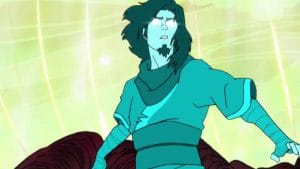
Raava and Wan merge in the climactic (and truly amazing) battle with Vaatu. Together, with Wan in control of all four of the elements simultaneously and entering what is called the Avatar state (marked by flaring white eyes), they trap Vaatu in a tree for the next 10,000 years.
The Crossing of the Return Threshold
Wan is now wiser and powerful – the first Avatar. He and Raava are bonded permanently after the battle with Vaatu. He sends the spirits home and decrees that he will be the bridge between the two worlds – teaching humans to respect the spirits so the balance achieved can be maintained.
All four of the elemental nations exist at this point, and they war with one another. As the (now very old) Avatar, Wan tries to establish peace amongst them, but feels as if he’s failed. In a short dialogue with Raava, she explains that her spirit will always exist in another so that balance might be achieved for all time.
Korra and The Hero’s Journey![korra wan avatar]()
This little two episode flashback explains so much of the world portrayed in The Legend of Korra, which, if you’ll recall from the opening paragraph, is my favorite thing about myths.
For years I’ve watched this show like so many others and just took bending, the nations, the presence of non-benders (the lion turtles decide not to bestow their powers onto any other humans, but those who already have the abilities can pass it along genetically), and the Avatar and his/her role at face value; never really wondering how it all came to be.
And it made a whole lot more sense and added gravity to all this talk of Harmonic Convergence in The Legend of Korra because as it turns out…Vaatu’s 10,000 year imprisonment is up and he is looking to get out on parole. As the current Avatar, its up to Korra to prevent that from happening. I won’t reveal here how that turns out!
Everything about these two episodes (7 and 8 of Season 2) is extremely well done and meaningful. It manages to add color to an already colorful world! I highly recommend you watch the two episodes even if you don’t watch any other episode of the show ever. They are done in such a way that they can stand alone, and they stand strong.
What is your favorite “modern” myth? Let us know in the comments!


